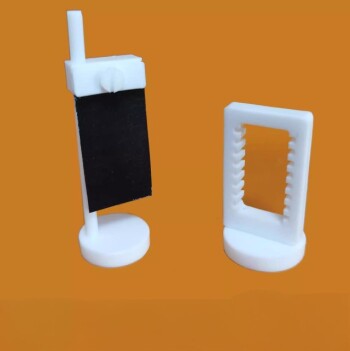The lifespan of an XRF gun, specifically its x-ray tube, typically ranges between 4 to 6 years or 10,000 to 30,000 hours of use, depending on various factors such as usage intensity, maintenance, and operating conditions. This lifespan is crucial for users to consider when purchasing an XRF gun, as it directly impacts the total cost of ownership and operational efficiency. Beyond the x-ray tube, the overall durability and longevity of the XRF gun also depend on factors like build quality, application focus, and adherence to proper maintenance schedules. Understanding these factors ensures that users can make informed decisions about their investment and optimize the performance of their equipment.
Key Points Explained:

-
X-Ray Tube Lifespan:
- The x-ray tube is the core component of an XRF gun, and its lifespan is a critical factor in determining the overall longevity of the device.
- Most x-ray tubes last between 4 to 6 years or 10,000 to 30,000 hours of use, depending on usage patterns and environmental conditions.
- Factors such as the intensity of use (e.g., continuous operation vs. intermittent use) and proper maintenance (e.g., regular cooling and cleaning) can significantly influence the tube's lifespan.
-
Factors Affecting XRF Gun Longevity:
- Application Focus: The type of materials being analyzed (e.g., metals, plastics, or alloys) and the frequency of use can impact wear and tear on the device.
- Operating Conditions: Harsh environments, such as high temperatures or dusty worksites, can reduce the lifespan of the XRF gun.
- Maintenance Practices: Regular calibration, cleaning, and servicing are essential to prolong the life of the XRF gun and its components.
-
Total Cost of Ownership:
- The lifespan of the x-ray tube and the XRF gun as a whole directly affects the total cost of ownership.
- Users should consider not only the initial purchase cost but also ongoing costs such as maintenance, calibration, and potential replacement of the x-ray tube.
- Choosing a reliable vendor with strong support and service offerings can help minimize downtime and extend the device's operational life.
-
Durability and Build Quality:
- The overall durability of an XRF gun depends on its build quality and design. Rugged, portable models designed for fieldwork may have additional protective features to withstand harsh conditions.
- Users should evaluate the portability and durability of the device to ensure it meets their specific working conditions.
-
Vendor Support and Service:
- The availability of technical support, training, and repair services from the vendor is crucial for maintaining the XRF gun's performance over time.
- A vendor with a strong service network can provide timely assistance, reducing the risk of prolonged downtime and ensuring the device remains operational for its expected lifespan.
-
Optimizing XRF Gun Performance:
- To maximize the lifespan of the XRF gun, users should follow best practices such as:
- Regularly calibrating the device to maintain accuracy.
- Avoiding excessive use in extreme conditions.
- Storing the device properly when not in use.
- These practices not only extend the lifespan but also ensure consistent and reliable performance.
- To maximize the lifespan of the XRF gun, users should follow best practices such as:
By considering these factors, users can make informed decisions about their XRF gun purchase, ensuring they select a device that meets their needs and provides long-term value. Proper maintenance and adherence to operational guidelines further enhance the device's longevity, making it a reliable tool for material analysis over many years.
Summary Table:
| Aspect | Details |
|---|---|
| X-Ray Tube Lifespan | 4-6 years or 10,000-30,000 hours, depending on usage and maintenance. |
| Key Factors | Usage intensity, operating conditions, maintenance practices, build quality. |
| Total Cost of Ownership | Includes initial purchase, maintenance, calibration, and potential tube replacement. |
| Optimization Tips | Regular calibration, proper storage, and avoiding extreme conditions. |
| Vendor Support | Crucial for technical assistance, training, and timely repairs. |
Ensure your XRF gun performs optimally for years—contact our experts today for personalized advice and support!

















